Why Progressive Web Apps (PWAs) are Perfect for Emerging Markets in India 2025
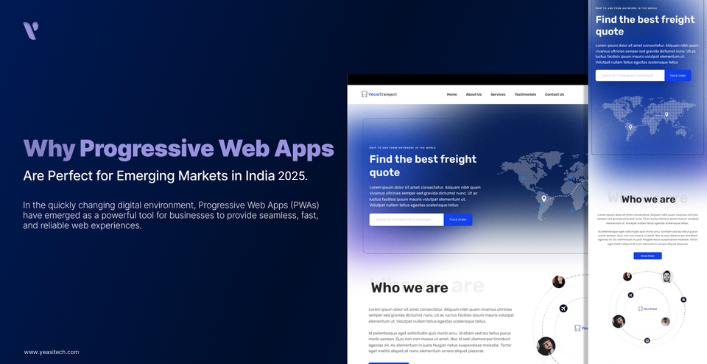
Progressive Web Apps (PWAs) have become a potent tool for companies looking to deliver dependable, lightning-fast, and seamless online experiences in the rapidly evolving digital landscape. Due to the increased availability of 5G and more affordable handsets, mobile internet usage has exploded, offering businesses throughout India an infinite number of new options to engage with their clientele.
In this case, Progressive Web Apps (PWAs) have become an important instrument for providing customers in areas where access to high-speed internet is not always assured with a seamless, quick, and interesting online experience.
This blog explains why Progressive Web Apps (PWAs) are a good choice for the Indian market. It also looks at real examples and how they have made a difference.
Developers create web apps that use current web features to deliver a native app-like experience. They may be loaded directly from the app store into the user’s home screen, have quick loading speeds, and work offline.
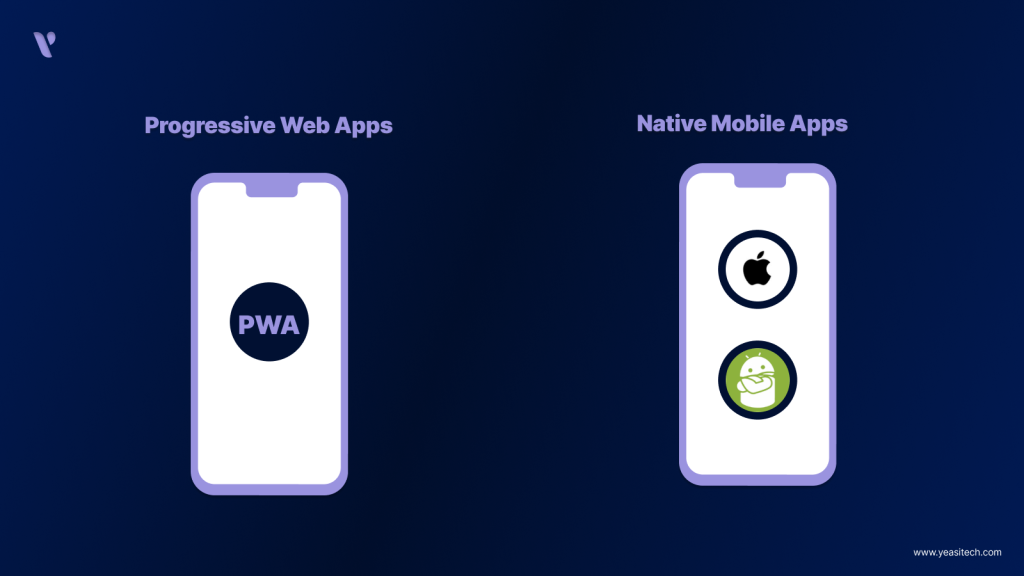
It’s necessary to understand the constraints of each app type in order to develop distinctive and engaging mobile apps. The decision to use native mobile apps, which are currently popular among businesses, can have an impact on a number of variables, including sales and conversion rates.
All things considered, and taking into account different aspects, PWAs have become more popular than native mobile apps. As we move further into the digital age, native apps can still greatly affect your business performance and productivity.
So, it is time that you must start including PWA apps for better opportunities. Below is a brief table that will help you understand how PWAs are sweeping the native app market.
| Feature | Progressive Web Apps (PWAs) | Native Mobile Apps |
| 1. Development Cost | Lower since all platforms use a single codebase. | Higher due to separate codebases for iOS and Android. |
| 2. Updates and Maintenance | Easier and more affordable with real-time updates. | Requires manual user upgrades and permission from the app store. |
| 3. Platform Independence | Cross-platform compatibility (iOS, Android, desktop) from a single codebase | Platform-specific (iOS, Android), requiring separate development efforts. |
| 4. User Engagement | Supports push notifications and can be added to the home screen, but might not have deep integration. | Seamlessly works with device functions and uses advanced features to increase engagement |
| 5. Performance | It works well overall, but might not be as good as native apps for heavy tasks. | Top performance for complex and demanding tasks. |
Get in Touch with our team if you have any queries or requirements. Our team will assess your needs as a business and as a product before presenting an elaborate cost estimate.
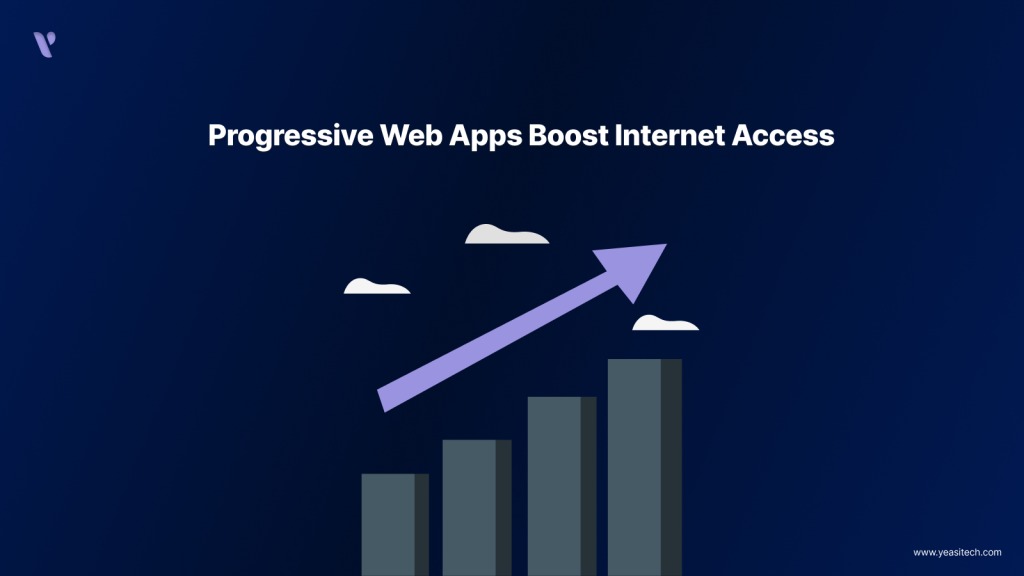
India is home to more than 1.4 billion people, the majority of which live in rural and semi-urban areas. As of 2025, the country has over 650 million internet users. According to a report by The Hindu, rural India now accounts for almost half of the country’s internet users, a notable rise from previous years.
There are few alternatives for fast and dependable broadband in these places, and the internet infrastructure is frequently underdeveloped. Slow speeds and expensive data plans can reduce the usefulness of classic mobile apps, even though 5G is becoming increasingly common. Progressive web apps can be useful in this situation.
“India’s digital revolution has been fast-tracked by mobile internet growth. With limited bandwidth in many regions, Progressive Web Apps offer a scalable solution for businesses to reach users efficiently.” — Satya Nadella, CEO of Microsoft
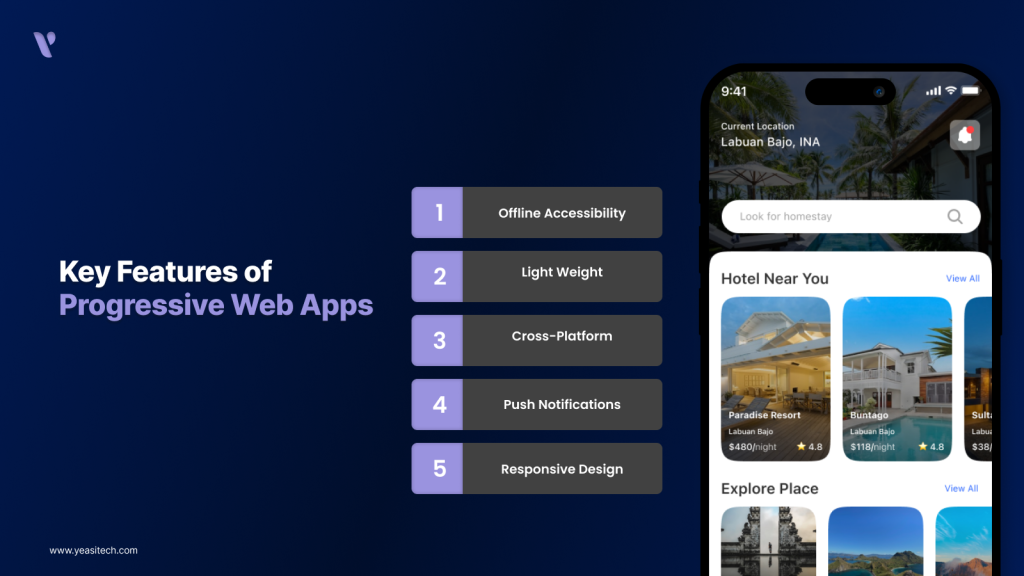
The following are the Key Features of PWAs :
Let’s discuss why Progressive Web Apps (PWAs) are ideal for markets in India:
Users in India’s growing areas might find it difficult to access online content and mobile applications due to high data charges. Regular updates are typically required for native apps, which use storage and data. Progressive Web Apps (PWAs), on the other hand, are less expensive since they are lightweight and don’t require updates from app stores.
According to a report by Medianama, over 45% of rural internet users are conscious of data consumption and avoid downloading apps that consume too much data.
Flipkart Lite, India’s largest online retailer, Flipkart, introduced Flipkart Lite, a PWA version of their platform, in 2015. Low-end device users and those with limited data access were the intended audience for this move. Consumers who accessed the site through Flipkart Lite observed a 40% higher re-engagement rate and a 70% increase in conversions. The app’s lightweight design allows users in emerging markets to purchase online with reduced data consumption.
Push notifications are a valuable feature of native mobile apps that help to keep consumers informed and involved. PWAs replicate similar functionality without asking users to download an application. This function has the potential to be extremely helpful for companies that cater to customers in areas where app penetration is low.
According to a report by Statista, the average open rate for push notifications in India is 7.8%, with a click-through rate of 4.6%. Businesses may keep their audience engaged even in places with weak network access by using push notifications through PWAs.
OLX PWA: Leading online listings company OLX introduced its PWA to increase user engagement in India. Push notifications and offline capability were made possible by OLX with the PWA; as a result, re-engagement increased by 250%, and push notification CTR (click-through rate) increased by 146%. These findings highlight the potential of PWAs to increase user engagement and retention, especially in areas where mobile app downloads may be restricted as a consequence of privacy concerns.
In many regions of India, particularly in rural areas, unreliable internet access is a serious problem. Users can continue using an app even if they lose their internet connection because of PWAs’ capacity to cache data and offer offline access to content. This feature is particularly useful in places with inadequate data access or poor smartphone connectivity.
Housing.com PWA. Leading Indian real estate website Housing.com implemented a PWA to serve visitors in places with inadequate internet access. Housing.com allowed consumers to peruse property listings even when they were not connected to the internet by using PWAs’ offline capabilities. This strategy greatly improved the user experience for users in emerging regions and resulted in a 38% rise in mobile traffic.

Progressive Web Apps (PWAs) are a financially sensible replacement for creating and managing native apps from a business viewpoint. It can be more expensive and time-consuming to create apps traditionally since different codebases are needed for iOS and Android. PWAs are built using a single codebase that works across all platforms, allowing for reduced development and maintenance expenses.
According to a Grand View Research report, companies that adopt Progressive Web Apps (PWAs) can save 50–70% on their mobile development costs and increase user retention rates by up to 60%.
“Progressive Web Apps not only offer a great user experience but also reduce the cost and complexity of app development, making them an ideal solution for businesses expanding into emerging markets.” — Sundar Pichai, CEO of Google
PWAs are expected to become even more important when 5G networks begin to roll out in India. With the increased internet speeds, reduced latency, and better network dependability that 5G offers, PWAs will be able to provide customers in growing countries with even more engaging experiences.
5G is anticipated to improve native app performance, but PWAs will gain from the new network infrastructure’s expanded capabilities, which include quicker load times, more responsive interfaces, and the capacity to handle more complex functions.
Dependency on Jio Platforms. At the front of the 5G revolution is Jio, a significant telecom provider in India. Jio intends to give customers all over the nation perfect digital experiences through the use of 5G networks. Jio is investigating the usage of Progressive Web Apps (PWAs) as part of its aim to provide consumers with quick, responsive, and interesting services, especially in areas where 5G will be a game-changer in closing the digital divide.
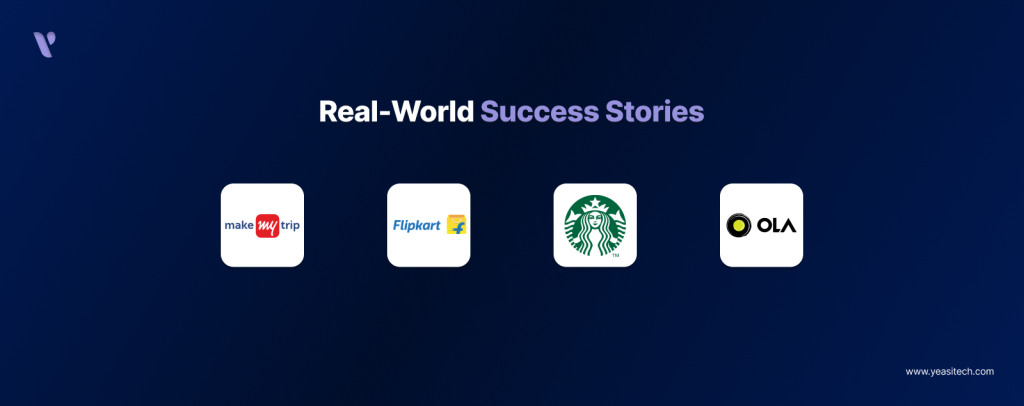
In order to improve user engagement, increase conversions, and maximize performance, let’s talk about actual case studies from the Indian market where companies have effectively used Progressive Web Apps (PWAs):
A Progressive Web App (PWA) was adopted by MakeMyTrip, a prominent travel and tourism firm in India, to solve problems with high bounce rates and sluggish mobile site performance.
Impact
A more responsive user experience was achieved using the Progressive Web App (PWA), which dramatically reduced load times by 50%. There was a 20% spike in mobile traffic when the PWA went live. Users exhibited higher retention rates due to the increased app-like experience provided by the PWA.

One of the largest online merchants in India, Flipkart, employed PWAs for improved consumer experience. To give customers a quicker, more stable experience—especially for those with erratic internet connections—Flipkart developed a Progressive Web App.
The Economic Times claims that Flipkart increased engagement and sales with the PWA strategy, especially in places with poor network access.
Impact
A 70% increase in conversion rates on mobile websites indicates that Flipkart’s Progressive Web Apps are effective in increasing user engagement.
“Progressive Web Apps allow us to combine the reach of the web with the rich user experience of native apps. Flipkart Lite, our PWA, is a powerful tool to drive engagement and conversions, especially in areas where internet speeds are slow.”– Sameer Nigam, Former Chief Product Officer, Flipkart
Starbucks released a Progressive Web App (PWA) that mimicked their mobile app’s capabilities while consuming less storage and bandwidth.. Users in areas with poor internet may now peruse the menu, modify orders, and even add things to their carts offline because of a PWA.
Impact
Given that the Progressive Web Apps (PWA) were 99.84% smaller than their native iOS app, the performance gain was amazing. Faster load times and improved performance were the results of this substantial size reduction, especially on low-end devices. Also, Starbucks’ PWA generated twice as many orders as its native app, even in places with spotty internet connectivity. This suggests that the PWA raised user engagement.
Progressive web apps are used by Ola, a significant player in the ride-hailing industry, to improve user performance and accessibility and provide a better experience, especially for customers with restricted data plans.
Impact
The Progressive Web App (PWA) has made Ola’s services considerably more accessible, which is especially useful for those with slow internet connections. Also, the new PWA improves the user experience by speeding up the booking process by 60%. Following the release of the PWA, Ola had a 15% increase in daily active users, demonstrating the app’s positive benefits on user engagement.
“Our PWA has been instrumental in providing a faster and more reliable booking experience, which has been well received by our customers.”– Ankit Jain, Co-Founder of Ola
Progressive Web Apps (PWAs) combine native mobile and online experiences, resulting in faster maintenance, less development costs, and more user engagement. In developing nations like India, where data costs and connection are problems, integrating PWAs may revolutionize company operations.
Our team of experts is ready to help you set up a PWA (Progressive Web App) so you can get the best results and keep your audience engaged.

Contact us for a simple, step-by-step discussion on how PWAs can benefit your business and fit your goals. Let’s work together to improve your online presence and make the most of digital opportunities!
PWAs offer faster load times, improved performance on weak networks, push alerts, offline access, and reduced data use. They are more accessible as they don’t require app downloads from an app store.
Yes, PWAs work offline or with a weak connection by using service workers to cache resources, allowing access to content and actions without internet.
Businesses should assess their web app’s performance and user experience. Implementing PWAs involves modern web technologies like service workers and web app manifests. Consulting a PWA specialist like YeasiTech can ensure a successful transition.
PWAs’ dependable performance and quicker load times increase user engagement. Push alerts and offline access are two features that attract customers to use the app again and stay interested.
Progressive Web Apps (PWAs) are web applications that offer a native app-like experience. They run in a web browser and provide fast performance, offline capabilities, and access to device features.
Users can install a PWA directly from their browser by clicking the “Install” or “Add to Home Screen” prompt. PWAs do not require app store downloads, making installation seamless.
Yes, PWAs can access device hardware features like GPS, camera, and push notifications. However, access is limited compared to native apps, and availability depends on the browser and operating system.
To build a PWA, ensure a responsive design, implement HTTPS for security, and use a Web App Manifest for metadata. Service Workers enable offline functionality and caching, enhancing performance. Optimize for speed and a smooth user experience.
Yes, PWAs can send push notifications using service workers, improving user engagement without requiring a native app.
Yes, PWAs can be tested and run in non-production (development) mode before deployment to ensure proper functionality.
PWAs are cross-platform web apps with lower costs and no app store dependency but limited hardware access. Native apps, installed via app stores, offer better performance and full hardware access but cost more to develop.
Progressive Web Apps (PWAs) provide offline access, push notifications, and an app-like experience, making them more interactive and functional. In contrast, Responsive Web Apps focus solely on adjusting the layout for different screen sizes but do not include advanced features such as offline mode or notifications.
YeasiTech is a trusted IT service partner with 8+ years of experience, empowering 250+ businesses with scalable web, mobile and AI solutions.
Explore related topics to broaden your understanding and gain actionable insights that can transform your strategies.